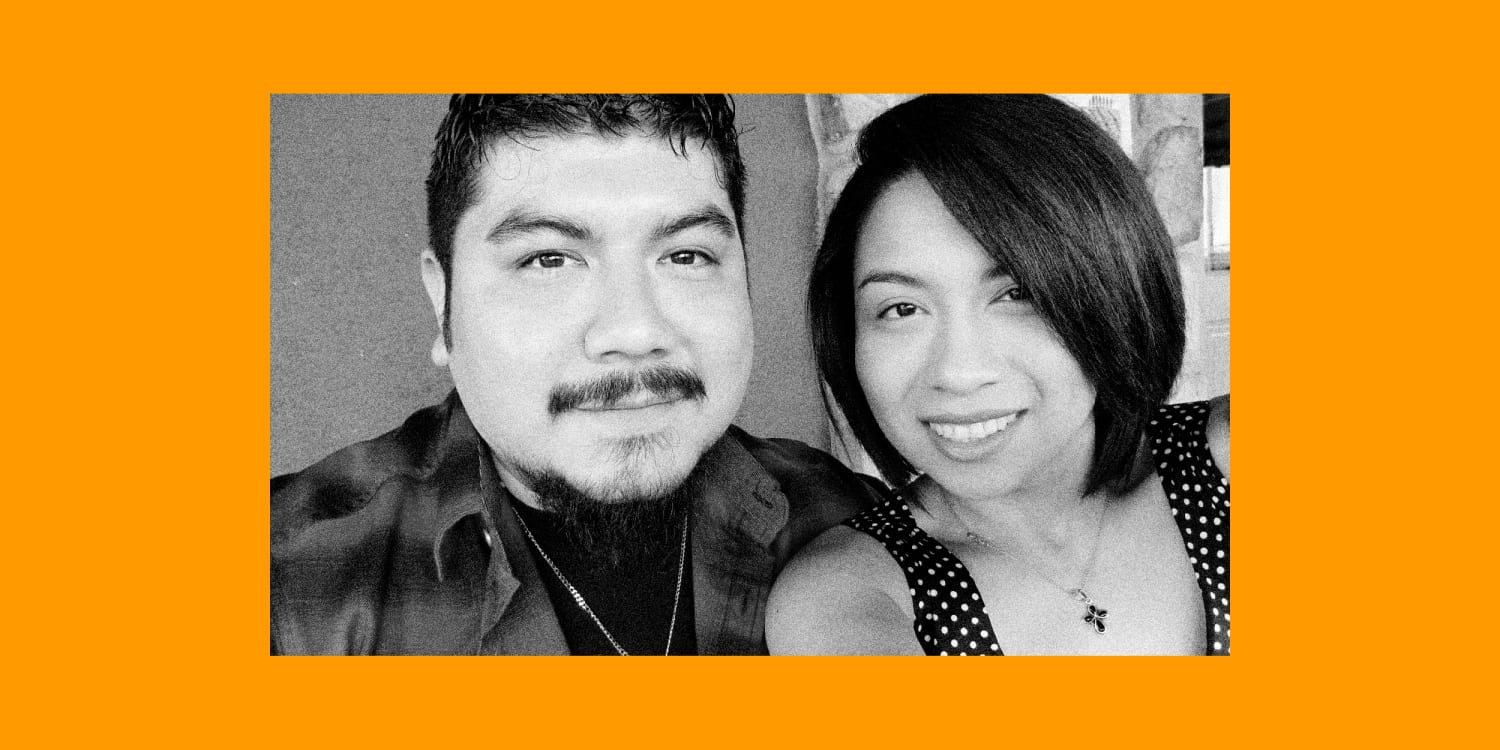
SAN ANTONIO — Ray Cisneros never wanted to be a husband or a dad, but three years ago he fell in love, married and became a stepfather.
To give his new family a better life, Ray took steps to start his own graphic design business. He had planned for quality family time in 2020, including taking the kids to baseball games with his sister Tina.
Instead, 2020 is the year Covid-19 killed Ray. He was 35 years old when he died July 27. The coronavirus also killed his aunt and grandfather.
“Within a matter of three weeks, we lost all of them,” Tina Cisneros said. “It’s hard to comprehend sometimes that all of this has happened.”
Covid-19 has snaked through the lives of Latinos for the larger part of a year, striking with its poison, maiming and killing.
The Cisneroses’ grief, their stress and depression, the economic clubbing of Ray’s family and the fallout for his children are multiplied many times over in many families.
As of Dec. 23, Covid-19 had killed more than 54,000 Latinos, according to the Centers for Disease Control and Prevention’sCOVID Tracking Project, which acknowledges that its numbers are incomplete.
The coronavirus exploited many Latinos’ long-standing gaps compared to white Americans in income, education and access to health care — including fewer doctors’ visits to treat diabetes, hypertension and higher rates of obesity while having less savings and lower wealth, as well as limited business capital.
It thrived on many Latinos’ employment in jobs that can’t be done from home, as well as language barriers for some.
“The only state where Latinos are not overrepresented in cases and casualties is in New Mexico, and that is because Native Americans have been hammered,” said Gabriel Sanchez, director of the University of New Mexico Center for Social Policy, earlier this month. By late December, Latinos in New Mexico, who are 49 percent of the population, made up 55 percent of the coronavirus cases and 37 percent of deaths, according to Johns Hopkins University and Medicine’s tracking.
Exploiting the gaps, Covid-19 ripped up the foundations of family and work and toppled what progress many Hispanics had made toward better economic standing.
A mortal strike on younger Latinos
“It has been a hellish, hellish year,” said Rogelio Sáenz, professor of demography at University of Texas at San Antonio, who helped paint the true picture of the destruction Covid-19 was wreaking that was later borne out by CDC numbers.
“Once you adjusted for age, you really see clearly that Latinos were dying at rates more than three times as high as the white population,” Sáenz said. “Texas continues to be the only state where more than half of the people who have died from Covid are Latino.”
An even more shocking truth is that Covid-19 has killed greater shares of the youngest members of the Latino population than other groups, according to states’ race and ethnicity numbers.
Latinos have the greatest share of deaths in age groups under 54, according to CDC data, while among whites, the greatest share of deaths has occurred in age groups over 65.
Among Americans in Ray Cisneros’ age group, 35 to 44, almost half (48.9 percent) of those who died were Latino, compared to 27.3 percent of Black people and 15.5 percent of whites, according to an analysis of 226,240 deaths using CDC data.
By contrast, in the 65-74 age group, 45.3 percent killed by Covid-19 were white, 24.7 percent were Black and 23.1 percent were Latino.
The horror of Covid-19’s snatching young and working-age adults was vivid early in the pandemic, as meat plant workers, whose safety has been a problem for decades, became ill and died, forcing a recognition that Latinos were overrepresented in “essential” jobs in service industries, farm work, grocery stores and more.
Economic, educational gains — then Covid
The deaths and cases catapulted many Latinos backward from what had been better times.
Ray’s wife, Matilda Cisneros, struggles to pay medical costs from his hospitalization on top of her other bills. She traded the nicer apartment she had with Ray for a smaller, more affordable one.
To help Matilda pay for Ray’s funeral and burial, Tina started a GoFundMe account, turning to the generosity of friends and family members and others who donated.
Before Covid-19 hit, Latinos had bounced back from the economic blow of the Great Recession. From 2016 to 2019, wealth among Latino and Black families grew faster than that of other groups, though they still had far to go to catch up to white families, whose median family wealth last year was $188,200, compared to $36,100 for Hispanics and $24,100 for Blacks.
Before the pandemic, Latino unemployment was at 4 percent, but then soared to 19 percent in April. It fell back to 8.4 percent in November, but it’s still double the pre-pandemic rate.
Latino businesses were the engine driving small-business growth, and some had been adding jobs until the pandemic hit. Now, more jobs have been lost in several industry sectors with disproportionately higher rates of Latino-owned businesses — such as food services — than in the private sector overall, according to the Urban Institute.
“The housing market, higher education and the rise of women in the workforce were driven by Latinos,” said Sáenz. “The devastation we are seeing today will set us back in terms of a lot of those gains we had been making.”
Katia Paz-Goldfarb, assistant vice president for Hispanic-serving initiatives at Montclair State University in New Jersey, is measuring the coronavirus’ long-term impact on Latinos in Connecticut, New Jersey and New York, using research from 30 Hispanic-serving colleges and universities.
“It’s a loss of what we have been accomplishing all these past years, in terms of moving our community to higher education, to opportunities to better themselves with social mobilization,” Paz-Goldfarb said. “What we are seeing now is a regression to a place that we were a few years ago.”
Last year, 18.8 percent of Hispanics who were 25 and older had college degrees, according to the Census Bureau — an improvement from 13.9 percent in 2010. Yet that share lags far behind the 40 percent of whites with college degrees, up from 33 percent a decade ago.
Meanwhile, studies show that Black and Latino K-12 schoolchildren in high-poverty schools are faring worse than their white counterparts during the pandemic after having spent large parts of the school year learning at home — if they could get online. The share of Latino children in the country’s public schools climbed to 27 percent in 2017.
A curse and a wake-up call
San Antonio City Council member Adriana Rocha Garcia knew from the start that the coronavirus would prey on her district’s residents, whose ZIP code has the city’s second-highest poverty rate.
She scrambled to find ways to protect her district’s residents, many without internet access and many who worked in the hospitality industry. Meanwhile, Covid-19 waged an assault on her family, killing six of her cousins living in San Antonio. They were all younger than 60.
At one point, 14 of Garcia’s family members were in the hospital.
“My dad thought that everyone in his family was going to die,” she said. Now, Garcia is focused on her community’s best hope — mobilizing to ensure everyone gets vaccinated.
Latinos and Blacks are more hopeful after the recent presidential election, a recent Pew Research Center survey found. But even as vaccines begin to be distributed and a new administration takes the helm, Covid-19’s impact isn’t going to be short-term, according to Paz-Goldfarb. “The Latino community is not going to go back to normal,” she said.
Sanchez, of the University of New Mexico, said that if there is a silver lining, it is that America has seen the consequences of large segments of the population’s not having access to basic necessities, such as health care and the internet. That will need to be resolved for full economic recovery, he said.
Ray Cisneros always supported his sister Tina’s plans to go to law school, which she still wants to do. Her brother’s death has led her to seek counseling, something that was outside the norm for her family. She and other relatives are walking more and taking steps to stay healthier.
The year was a curse, yes, but 2020 also was a wake-up call, she said.
“It made me realize all the things I took for granted,” Cisneros said. “Even just the hugs, you know, being around my family.”
Follow NBC Latino on Facebook, Twitter and Instagram.
Source: | This article originally belongs to Nbcnews.com










